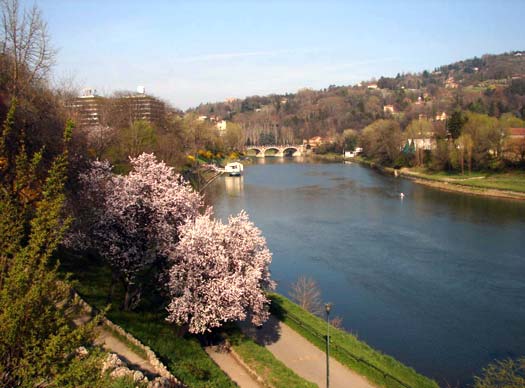- The Po River basin generates nearly 40% of the Italian national GDP through intensive industry and other economic activities.
- The Po River basin extends from the Alps in the west to the Adriatic Sea in the east and covers an area of 74,000 km2. While 5% of the basin lies in Switzerland and France, most of it is situated in northern Italy. This is where the basin is the largest, its main channel the longest (650 km), and its discharge the biggest.
- The Po basin is home to some 16 million people (2001), and extends over 24% of Italy’s territory. The regions of Piedmont, Aosta Valley, Liguria, Lombardy, Veneto, Emilia Romagna and Tuscany lie partially or completely within it, as does the Autonomous Province of Trento.
- Average precipitation varies from a maximum of 2,000 mm in the Alpine range to slightly less than 700 mm in the eastern plains, with an annual average of 1,100 mm.
- Meteorological records indicate that the total number of rainy days in Italy decreased by 14% from 1951 to 1996. The decrease was most pronounced in winter. The amount of rainfall also declined, especially in central and southern Italy. In addition, during the same period, persistent droughts grew more frequent. Similar trends have been observed in the Po River basin. Average annual rainfall has diminished there by 20% since 1975, and the average yearly discharge at Pontelagoscuro, near the lower end of the river, has fallen by between 20% and 25%.
- The amount of available freshwater resources in the Po River basin is estimated at 77.7 billion m3.
- Agriculture in the Po River basin is highly developed, accounting for more than half of the land use in the basin. In fact, at 30,000 km2 it is the largest cultivated area in Italy, and accounts for 36% of the country’s agricultural production. Accordingly, agriculture has the highest water demand of any sector in the basin, withdrawing nearly 17 billion m3 per year. About 11,000 km2 of the cultivated area is irrigated, almost exclusively (87%) from surface watercourses.
- The Po River basin is also urbanized, and home to 28% of Italy’s population. Lombardy, Piedmont and Emilia Romagna are the most populated regions and have a concentration of economic activities.
The section “Did You Know…?” is taken from the 3rd World Water Development Report “Water in a Changing World“.
Source: http://www.unesco.org


